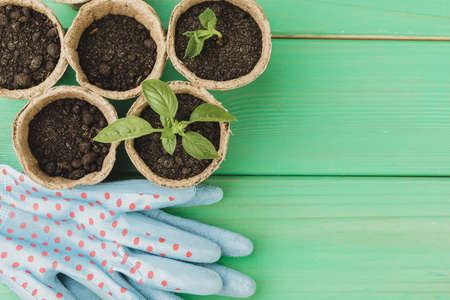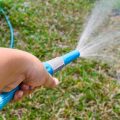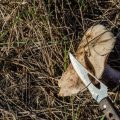1. Introduction to Essential Gardening Tools
If you’re just getting started with home gardening or looking to upgrade your tool collection, having the right hand tools is a game-changer. Whether you’re growing vegetables in a backyard garden in California or tending flower beds in a New England suburb, the tools you use can make all the difference. American gardeners face a wide range of climates—from dry desert heat to humid southern summers—and different soil types like clay, sandy, or loamy soils. That’s why choosing the right tools isn’t just about convenience; it’s about making gardening easier, more efficient, and more enjoyable.
Hand tools are especially important for tasks like planting, weeding, pruning, and cultivating. Unlike larger power equipment, hand tools give you precision and control, letting you work closely with your plants. But not all tools are created equal—some are better suited for certain regions and soil conditions than others.
Here’s a quick look at why selecting high-quality, well-suited hand tools is so important:
| Reason | Why It Matters |
|---|---|
| Durability | Strong tools last longer and perform better over time, especially in tough soils. |
| Comfort | Ergonomic handles reduce hand fatigue during long gardening sessions. |
| Efficiency | The right tool makes each task quicker and easier, saving time and effort. |
| Suitability for Soil Type | Certain materials and designs work better in clay vs. sandy or rocky soils. |
Understanding your local climate and soil type is key when picking out your essential gardening hand tools. In the next sections, we’ll break down the top 10 must-have tools every American gardener should consider—and how to choose the best one for your needs.
2. Factors to Consider When Choosing Gardening Tools
When youre investing in gardening hand tools, its important to choose the right ones that suit your needs and make your gardening tasks easier and more enjoyable. Here are some key factors to keep in mind when picking out tools for your garden shed.
Ergonomics: Comfort Matters
Look for tools that feel comfortable in your hands. Ergonomic designs help reduce strain on your wrists, arms, and back, especially if you spend a lot of time working in the yard. Features like cushioned handles, curved grips, and lightweight materials can make a big difference during long gardening sessions.
Durability: Built to Last
Gardening tools take a lot of wear and tear, so youll want something that holds up over time. High-quality tools might cost a little more upfront but will save you money in the long run. Check for solid construction, rust-resistant finishes, and sturdy joints.
Material: Choose Wisely
The materials used in the tools construction affect its strength and longevity. Here’s a quick comparison of common tool materials:
| Material | Pros | Cons |
|---|---|---|
| Stainless Steel | Rust-resistant, easy to clean, strong | Can be heavier than other options |
| Carbon Steel | Very strong and sharp | Prone to rust if not maintained |
| Aluminum | Lightweight, won’t rust | Less durable for heavy-duty tasks |
| Plastic/Composite Handles | Lightweight, affordable | May crack or break over time |
| Wooden Handles (Ash/Hickory) | Comfortable grip, traditional look | Needs occasional maintenance to prevent splintering or rotting |
Task-Specific Needs: Right Tool for the Job
Each gardening task requires different types of tools. Before buying, think about what kind of work youll be doing most often. For example:
- Trowels: Great for digging small holes and transplanting seedlings.
- Pruners: Ideal for trimming dead branches or shaping shrubs.
- Weeders: Help remove unwanted plants without disturbing nearby roots.
- Hand Forks: Loosen compacted soil and mix in compost.
- Loppers: Handle thicker branches that pruners cant cut.
Selecting the right tools based on these factors will make your gardening efforts more efficient and enjoyable. Take your time to test out different styles and brands if possible—what works best for one person might not be ideal for another.
![]()
3. Top 10 Must-Have Gardening Hand Tools
Whether youre a beginner or a seasoned green thumb, having the right hand tools can make your gardening tasks easier and more enjoyable. Here’s a curated list of the top 10 essential gardening hand tools every home gardener in the U.S. should consider adding to their tool shed.
| Tool | Description & Use |
|---|---|
| Trowel | A small handheld shovel perfect for digging holes for planting, transplanting seedlings, and scooping soil or compost. |
| Hand Pruners (Secateurs) | Used to trim or shape plants, prune dead stems, and cut back perennials. Bypass pruners are great for live plants, while anvil pruners work well on dead wood. |
| Weeder | This tool helps remove weeds from tight spaces without disturbing nearby plants. Look for one with a forked tip or curved blade for better leverage. |
| Hand Rake (or Shrub Rake) | A smaller version of a garden rake, ideal for clearing debris from flower beds or around delicate plants. |
| Garden Knife (Hori Hori) | A versatile Japanese-style knife used for digging, weeding, cutting roots, and even opening bags of soil or mulch. |
| Transplanter | A narrow-bladed trowel designed specifically for transplanting flowers and vegetables with minimal root disturbance. |
| Hand Cultivator | Has three or more prongs and is great for loosening soil, mixing in compost, and aerating garden beds. |
| Soil Scoop | This deep-bowled scoop is ideal for filling containers with potting mix and transferring soil without spillage. |
| Gloves | Protect your hands from thorns, splinters, and dirt. Look for breathable, water-resistant gloves with good grip. |
| Kneeling Pad or Garden Kneeler | Not exactly a “tool,” but it saves your knees during long planting sessions. Some versions come with handles that help you get up easily. |
Each of these tools plays a unique role in keeping your garden healthy and manageable. Having them on hand ensures youre ready to tackle everything from planting new blooms to pulling pesky weeds with ease.
4. How to Match Tools with Your Gardening Style and Needs
Choosing the right gardening hand tools isnt just about picking the most popular or expensive ones — its about finding what works best for you and your specific garden. Whether youre working with a small patio garden or a sprawling backyard, matching your tools to your garden size, plant types, physical ability, and local U.S. climate can make all the difference.
Garden Size and Layout
The size of your garden plays a big role in determining which tools are most useful. Here’s a quick guide:
| Garden Size | Recommended Tools |
|---|---|
| Small (e.g., balcony or container garden) | Hand trowel, pruners, watering can, compact cultivator |
| Medium (e.g., suburban backyard) | Hand fork, weeder, transplanter, bypass pruners, kneeling pad |
| Large (e.g., rural homestead or large plots) | Lopper, hori hori knife, garden hoe, hand rake, ergonomic tools for long use |
Types of Plants You Grow
The kinds of plants you grow can also influence your tool choices. For example:
- Vegetables: Transplanters, weeders, and soil knives are great for planting and maintenance.
- Flowers: Pruners and deadheading snips help keep blooms healthy and neat.
- Shrubs & Trees: Loppers and sturdy pruners are essential for trimming thicker branches.
Your Physical Comfort & Abilities
If you have joint issues or limited strength, look for ergonomic tools that reduce strain. Features to consider include:
- Padded handles: Offer better grip and comfort.
- Lightweight materials: Aluminum or fiberglass options ease fatigue.
- Extended reach tools: Help avoid bending or kneeling too much.
The U.S. Growing Environment
Your local climate affects what tasks youll perform most often. Heres how regional factors come into play:
| Region | Tool Considerations |
|---|---|
| Southeast (humid, long growing season) | Disease-resistant pruners, durable gloves for pests/weeds |
| Southwest (hot and dry) | Soil knife for hard ground, watering tools like hose wands or drip systems |
| Northeast (cold winters) | Rust-resistant metal tools, sturdy hand rakes for fall cleanup |
| Midwest (variable seasons) | Versatile multi-use tools like hori hori knives and strong cultivators |
| Pacific Northwest (wet climate) | Mold-resistant handles, sharp pruning tools for fast growth cycles |
Personal Gardening Style Matters Too!
If youre more into detailed work like bonsai or flower arranging, precision tools such as fine-tip snips may be your go-to. If you enjoy digging in the dirt and growing food from scratch, rugged digging tools will serve you better. Pay attention to what feels good in your hands—comfort is key when you spend hours in the garden.
Selecting the right gardening hand tools based on these factors ensures not only efficiency but also enjoyment every time you head out into your green space.
5. Care and Maintenance Tips for Longevity
Once you’ve invested in your must-have gardening hand tools, it’s important to take good care of them. Proper maintenance not only extends the life of your tools but also keeps them working efficiently. Here are some easy tips to help you keep your tools in top shape all year long.
Clean After Every Use
Dirt, sap, and moisture can cause rust and dull blades over time. Make it a habit to rinse or wipe down your tools after each use. For stubborn grime, use a wire brush or putty knife. Dry thoroughly with a towel before storing.
Keep Tools Sharp
Sharp blades make gardening easier and safer. Use a sharpening stone or file to maintain the edges of pruners, shears, and hoes. Sharpening once every few weeks during heavy use is usually enough.
Oil Metal Parts
To prevent rust, apply a light coat of oil (like linseed oil or motor oil) to metal parts after cleaning. This creates a protective barrier against moisture.
Recommended Oils for Tool Maintenance
| Oil Type | Best Used For |
|---|---|
| Linseed Oil | Wooden handles and metal blades |
| WD-40 or Multi-purpose Oil | Joints and moving parts |
| Vegetable Oil (Temporary) | Quick fix when other oils aren’t available |
Store Tools Properly
A dry and organized storage space helps prevent rust and accidental damage. Hang tools on a wall rack or store them in a toolbox or garden shed. Avoid leaving them outside exposed to the elements.
Tool Storage Tips
- Use pegboards to hang tools for easy access and air circulation.
- Add silica gel packs or charcoal briquettes to toolboxes to absorb moisture.
- Keep sharp tools covered with blade guards or old rags.
Handle Wooden Parts with Care
If your tools have wooden handles, sand them lightly once or twice a year to remove splinters, then apply linseed oil to keep the wood from drying out and cracking.
Check for Damage Regularly
Inspect your tools often for loose screws, cracked handles, or bent parts. Fix minor issues early before they become bigger problems that require replacement.
Create a Maintenance Routine
A quick weekly check-in can save you time and money in the long run. Heres a simple routine you can follow:
| Task | Frequency |
|---|---|
| Wipe down tools after use | Every time |
| Sharpen blades | Every 2–4 weeks (during active season) |
| Oil moving parts and blades | Monthly or as needed |
| Smooth and oil wooden handles | 1–2 times per year |
| Tighten screws & check parts | Monthly |
Treating your gardening tools with care ensures they’ll be ready whenever you need them — whether youre pruning roses in spring or turning soil in fall.


